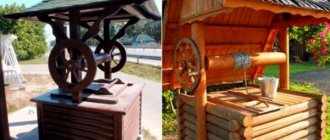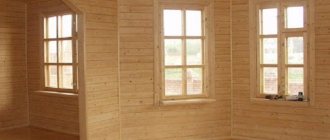Long-forgotten crafts are gradually being revived, bringing good income to enthusiasts. One of these areas is cooperage, which originated hundreds of years ago. Even then, people understood all the advantages of wooden barrels: pickles were kept in them, wines and other alcoholic drinks were infused.
Despite the fact that today alternative materials are increasingly used for the manufacture of containers (plastic, metal), the production of wooden barrels has not lost its position. The natural material is environmentally friendly, safe to use and has a very long service life. And it is impossible to make good wine that is not infused in a wooden barrel.
But what is container production? How are wooden barrels made? We'll talk about this in this article.
Photo: courtesy of the site rus-bondar.ru/barrel
Stages of making barrels
Modern capabilities make it possible to automate almost any production process. However, the manufacture of barrels can be done manually, without the use of chemicals or welding. Everything we need was given by nature itself.
First you need to decide on the optimal type of wood. To this day, the production of oak barrels remains the most popular. This is the material most often used by skilled coopers.
In general, the process of making barrels is complex only at the stage of creating blanks. The following work will be required:
- production of rivets; drying; hydrothermal treatment.
At the initial stage, splitting of oak blocks occurs.
After this, they are split into separate sectors, from which the rivets themselves are subsequently produced. Thanks to this technology, it is possible to achieve more attractive material characteristics compared to sawn analogues. Therefore, skilled professionals support the production of wooden barrels using traditional methods.
Finished rivets are stored outdoors for about two years.
Since oak barrels are made with a long service life in mind, it is necessary to make the material resistant to the negative effects of various factors. Long-term preparation of rivets helps prevent future deformation of the barrel, the appearance of cracks and chips, and rotting. The result is a high-quality and durable material, which is also easy to process.
Before assembling the frame, the barrel production technology involves softening the rivets, which become very hard over a long drying period. To do this, the workpieces are heated and moistened. This scheme eliminates possible breakage of the rivets during the bending process.
To bend the frame, use a grill with an open fire, on which the material is heated for just over half an hour. The advantage of this method of heat treatment is the “awakening” of the aroma of wood, since under the influence of open fire the sugar contained in the preparations is caramelized. Next comes installation of the bottom and scraping.
The advantage of modern production
The production of wooden barrels can be manual or industrial. In the first case, the master creates blanks with his own hands, and in the second, using special equipment.
But how are wooden barrels most often made? The choice of the optimal option depends on the scale of production, purpose and volume of containers. The important thing is that with the help of modern equipment it is possible to create fairly high-quality rivets, so this technology will not in any way impair the performance properties of the finished product.
If you want to select and purchase high-quality oak barrels, go to the website. The assortment includes many products created in strict accordance with technology.
As an advertisement
What unites people with the names Bocharov, Bondarenko, Cooper, Tonnelier, Fassbinder, Kadar? That's right, their ancestors were owners of the ancient and very respected profession of cooper (cooper). The barrel is firmly rooted in human culture.
From the names of the barrel came the designations for volume and mass - barrel and ton. Which pickles, herring or beer are the best? Well, of course, barrel ones! The design of the barrel is not that complicated, but it is fantastically difficult to make it correctly.
Cooperage is a broader concept than a barrel.
It includes tubs for pickling cabbage, wooden buckets, gangs, and now fashionable fonts for different types of baths. And everywhere we are talking about a certain vessel, the walls of which are assembled from separate wooden planks, tied with hoops. But the barrel clearly stands out from this series both because of the complexity of its manufacture and its special properties.
Let's start with the fact that it cannot be called a 100% carpentry product. The carpenter's job is to prepare the wood pieces to the required dimensions and then join them together using metal fasteners, tenons or glue. In a barrel, prepared wooden parts (they are called rivets) cannot simply be connected.
The rivets not only connect to each other, but also bend with great force under the influence of high temperature, which softens the wood fibers. So, in a certain sense, the barrel is made of wood. By the way, the technology of bending wooden parts under the influence of heat or steam was first developed in ancient times during the construction of wooden boats and, apparently, was later borrowed by coopers.
The first wooden vessels (like the first wooden ships) were dugouts. Under the influence of air and moisture, the hollowed out vessels dried out and cracked, and perhaps it was then that our ancestors came up with the idea of assembling a vessel from segments with the correct direction of the fibers. 1.
Preparation of rivets. Different types of wood are suitable for making barrels, but dense wood is preferred for wine barrels. The churak (a fragment of a tree trunk) is initially cut into four segments by a cleaver, and rivets are made from them.
Sales of products
You need to start searching for potential buyers at the stage of registering a business. The main target clients will be companies whose activities involve the use of large quantities of barrels on an ongoing basis. These include:
- wineries, cognac factories;
- construction companies engaged in the construction of baths and saunas, owners of such establishments;
- food processing enterprises for agricultural products;
- farms and individuals.
It is also necessary to establish connections with wholesale warehouses and hypermarkets of building materials, which can take oak barrels for sale. All listed large wholesale customers should be dealt with directly. To do this, you need to call, organize personal meetings, and send commercial offers.
In addition, it is necessary to focus on retail buyers. To attract them, you need to organize an advertising and marketing campaign using the following tools:
- creating your own website with a detailed description of the advantages of manufactured barrels and options for cooperation;
- active promotion of your brand on social networks, on trading platforms, city and thematic forums, as well as through various types of online advertising;
- publication of advertisements in local media and specialized publications;
- participation in thematic fairs and exhibitions.
Retail buyers are advised to sell barrels directly from the workshop. You also need to accept orders for the manufacture of products according to individual parameters. Opening your own store will not be profitable at first, but over time it may become necessary if business goes well.
In the belly of wood
Take a look at the giant cargo ship, on the deck of which metal containers with various goods are displayed several floors high. The barrel became the first sea container in history that could be stacked in the holds in the same multi-story stacks. No tub can withstand this, but a barrel can easily: thanks to its design, it can withstand very high pressure from the outside.
The dome-shaped shape of the side walls ensures that the point load is transferred to the entire body of the vessel. It is also convenient to roll the barrel, and due to the small “contact patch” with the surface, you can change the direction of movement without much effort. It would be much more difficult to “steer” a vessel of the correct cylindrical shape.
2.
Socket assembly. Rough hoops are used to assemble the barrel frame. Due to their shape (wider in the middle, narrower at the ends), the rivets connected in a circle form a structure that vaguely resembles a flower with diverging petals.
Particular importance is attached to the contact of the contents of the barrel with its wooden walls during the aging process. Not only well-known types of alcoholic drinks such as wine, cognac, whiskey, Calvados, but also balsamic vinegar, as well as salted cayenne pepper puree, which after fermentation and aging becomes the basis for Tabasco sauce, are matured in barrels to the required organoleptic conditions.
Initially, cooperage production was entirely based on manual labor. Nowadays, craftsmen have machines at their disposal, with the help of which rivets are shaped, rosettes are tightened, and hoops are set. However, some operations are still performed manually, and for this they use tools that have existed for many centuries.
Even in Soviet times, a lot of barrels were made in our country - they were the main container for fish, meat, and pickles. Nowadays plastic containers are used much more often, and the barrel has become, as they say, a niche product. To understand the technology of modern cooperage production, PM visited the production site of the St. Petersburg enterprise Vinstandart, which produces tubs, fonts and other wooden delights, as well as barrels for aging wine, the production of which has special requirements.
3.
Stretching and heat treatment. The rivets are tightened to obtain the characteristic “pot-bellied” shape using a loop of metal cable. To relieve stress in the wood, the frame is heated several times with steam and fire.
“For a wine barrel, you need dense wood,” explains the company’s general director, Vladimir Sysoev.
— The lower the density, the more permeable the barrel is to the environment, the more intense the gas exchange, and this can lead to premature spoilage of the wine. The ideal raw material available in our country is Caucasian oak. This tree grows in difficult rocky conditions, takes deep roots and has very little annual growth.”
The width of the growth ring for the wood from which the wine barrel will be made should be no more than 2 mm. But there is one more subtlety: so-called modular rays go from the core to the outside of the trunk. These are channels through which tree sap moves, and if such a channel crosses the wooden wall of the barrel from the inside to the outside, then over time the barrel may leak - in any case, the permeability of the wall to gases will increase, which is undesirable.
The newly assembled skeletons of the barrels still look rather rough. Only after final processing (scraping, wax impregnation) will these cooperage products take on a truly noble appearance.
Therefore, as blanks for rivets, not sawn wood material is taken, but chopped wood. It is prepared so that the channels do not intersect the thickness of the planks, but remain predominantly inside them. The split planks are kept in air for three to five years for high-quality natural drying - however, in our fast-paced times there are ways to significantly speed up the drying of raw materials.
Making a wooden barrel with your own hands will allow you not only to save money, but also to get a high-quality elegant product. Wooden barrels were used by our ancestors for pickles, making alcoholic beverages and storing water, which proved their versatility.
Therefore, they are still successfully used to this day. How to make a wooden barrel so that it is durable and does not leak? What tools and skills are required to make a barrel at home?
How to achieve mastery?
Wooden barrel
If you are determined to achieve your goal and are not afraid that you will have to modify the product to the desired state, then you can make your dream come true and make a wooden barrel yourself. Cooperation is a difficult profession that came to us from past centuries. Today there are few masters of this craft, and there are even fewer highly qualified specialists in the manufacture of barrels, so barrels on free sale are rare, and not everyone can afford the cost of the product.
A little history
According to some researchers, the ancient Greeks knew about cooperage, who stored water, wine and oil in large barrels. However, there is little information about that era, and the actual evidence dates back to a later period - 1st-2nd centuries. ad. The first reliable data allowing us to talk about the Bondar case in Rus' dates back to the 8th century AD. e. At the same time, scientists suggest that this craft began much earlier.
Throughout history, coopers were highly valued, because even now there is no real alternative to wooden utensils.
Tools
To make your first barrel or small barrel, you need to prepare a place in which it will be convenient to work, tools and suitable material. In addition to the carpentry kit needed to make a barrel with your own hands, you need to purchase cooper’s tools:
- a carpenter's workbench adapted for the production of barrels; a long jointer and a humpbacked circular plane; a device for planing edges on boards, from which the barrel will be assembled; equipment for tightening rivets (post gate, chain tie and frame gate machine); scrapers, plows, bracket; templates and patterns of our own production; clamps made of wood, metal (for assembling the frame of the barrel); morning tea - a device that allows you to cut a morning groove into which the bottom part is inserted.
You need to understand that it is quite difficult to purchase these tools, wood and devices on the market, since almost all coopers make machines and layouts themselves, taking into account their height. This is done by trial and error, no instructions will help.
About waxing
If the product with moonshine is left in a warm place, then intense evaporation of the distillate will occur through the walls. To prevent this, you need to wax a hand-made oak barrel. To do this, place beeswax in a water bath and gradually melt it, while filling it with linseed oil and mixing thoroughly. Next, using a soft and wide brush, the composition is applied to the surface of the barrel. In order for the wax to spread evenly and better saturate the wood, it needs to be slightly heated with a hair dryer. If you don’t have this tool, then you can limit yourself to a regular hairdryer.
What you need to know
Wooden wine barrel
The main difference between cooperage products is their assembly from pre-prepared wooden boards (rivets). The size and shape of the barrel depend entirely on the pre-prepared boards, the configuration of which is set by the cooper.
And the initial quality of wooden barrels depends entirely on the wood chosen. For this reason, it is not enough for a master to have thorough mastery of the instrument. You need to know the intricacies of each type of wood from which wooden products will be made.
An experienced craftsman will not make a barrel for honey from oak blanks, because he knows that in such a container the honey will quickly acquire a completely different aroma and darken. But it is impossible to find a replacement for oak barrels for aging wines and cognac.
The second element is a hoop that tightens all the components of the barrel. It is thanks to the hoop that water does not seep through the joints between the boards.
It can be made of metal or wood. As the experience of craftsmen shows, metal hoops are much stronger, and less time is spent on manufacturing than wooden hoops. But some craftsmen still prefer a wooden hoop, giving the barrel a more beautiful look.
Cooperation traditions
From time immemorial, this work was considered the lot of men. This is due to the fact that it requires remarkable strength. Even now, when a master can use the achievements of science and technology, there are practically no women in the craft.
Another tradition is related to the fact that cooperage has changed so little over time: it does not recognize anything artificial and synthetic. Today, any wooden product can be reliably glued together with special harmless compounds and covered with a layer of a substance that protects the material from moisture and other external influences. However, in the Bondar case, none of the above applies. Like several centuries ago, it uses only natural wood. For reliable fastening, neither glue nor metal hoops are required; any connection can be made using wooden dowels.
Be careful: traditional cooperage can only be made of wood.
Details and principle of product manufacturing
Many people believe that becoming an amateur cooper is very difficult, and dreams never come true. But if you are not used to retreating from your decisions, then you need to decide which option will be your first job.
There are 3 types of products: conical, cylindrical and parabolic. Each corresponds to a certain type of rivets:
Products made in the shape of a quadrangle, the long sides of which have the shape of a parabola, are used for dishes with convex edges: barrels or kegs. The cylinder-shaped design is simple.
It is easy to make and connect with hoops of the same diameter, but when the wood in such a structure dries out, the rivets cease to perform their functions. This is the main reason why such containers are practically never made. The shape of an elongated trapezoid allows, when stuffing rivets, to obtain durable dishes. Therefore, this type of product is often suitable for making tubs, tubs and other utensils.
As an experimental sample, it is better to focus on a simple small barrel.
Many people are interested in how a regular tub is made. A tub is the simplest cooper's product; having achieved results in its manufacture, you can move on to more complex types of utensils, for example, making a wooden barrel with your own hands.
The principle of creating a product consists of the following stages:
- production of blanks; assembly of dishes; finishing work.
Preparation of rivets
Preparation of rivets
The reliability of the structure will depend on the quality of the riveting blank, so the most suitable are blanks from logs of sawn wood, chopped with an ax.
For barrels, the most common wood choice is oak, as it splits easily in a radial direction. The process of preparing staves from different types of trees is practically the same; a single-row or double-row knockout method is used. For large logs, a two-row method is used, and for thin logs, only a single-row method is used.
The procedure for cutting out rivets is as follows:
The log must be carefully split in half so that the split line runs strictly through the center of the workpiece. Each block must be split in two to get 4 equal parts. Next, you need to split the wood for the workpiece in half again to get 8 equal parts.
Usually for small logs this is quite enough. Exactly 1/8 of the part will become the riveting blank. If the ridge is thick, a double-row punch is used, i.e.
each of the 8 parts is split into 2 equal parts along the growth rings. The resulting logs must be split in the radial direction. The result will be 1-2 pieces of smaller size and 2-5 for pieces of larger parameters. Next, you need to cut off the wedge-shaped protrusions and young wood from the bark side. Only after this can the workpiece be dried in an open area or resort to artificial drying.
Manufacturing of rivets
In order to make rivets from the prepared material, you must first prepare drawings and a template for a specific product in accordance with the desired shape. To get ready-made rivets, you will need:
- Perform markings. Do rough processing of each of the workpieces. Namely, round the outer surface, bevel the edges with an axe. Perform finishing work using a plane, constantly monitoring the result with a template. Plane the inside of the workpiece with a humped scraper. Trim the narrow edges, and then level their surface with a jointer.
In the process of making barrels, the cooper has to make the tightening hoops himself. The easiest way to get a hoop is from steel tape.
To do this, you will need to determine the diameter of the container and add twice the width of the strip to the resulting figure. Next, using a hammer, you need to bend the tape into a ring, drill 2 holes and secure them with rivets. To make a small barrel you will need 2 hoops that will correspond to the diameter of the upper and lower parts of the product.
Premises, staff
For a mini cooperage factory you will need a small room with a total area of 100 square meters. m, of which:
- production workshop – from 30 sq. m;
- 2 warehouses (for raw materials and finished products) – from 60 sq. m;
- office, utility rooms - 10 sq. m.
To prepare the raw materials, an additional area of several hundred square meters will be required to bring the wood to certain properties.
It is best to locate an enterprise on the outskirts of a city/village, where rent/construction will be several times cheaper.
Personnel required:
- manager (entrepreneur himself);
- accountant (through outsourcing);
- coopers;
- line operators;
- auxiliary workers;
- cleaner.
The main focus should be on coopers. They must know all the intricacies of barrel manufacturing and control the technological process.
Bottom assembly and installation
For the bottom, it is recommended to choose the widest blanks, since the minimum number of joints guarantees a high percentage of reliability. To make the bottom of a barrel, you need:
- Sand the edges of the boards, fix them on the workbench and divide the radius into 6 parts. Mark the locations of the studs within the circle. Pull out the boards. Drill holes in the edges, drive wooden or metal pins into them. Connect all the elements tightly and secure with pins, after which you can plane the bottom. Cut out the bottom, leaving a small margin. Remove the chamfer with a straight planer and knock down the hoop, loosening the fastening of the rivets. Insert the bottom into the chimney and turn the tub upside down. Set the hoop down.
All that remains is to make a lid for the tub and, after checking the design for strength, begin to use the container. If you like the work done, it makes sense to continue working on making barrels.
A wooden barrel is the best container for storing wine and various pickles, because wood is an environmentally friendly material that preserves the taste and healthiness of products. This irreplaceable household item can be purchased ready-made, but if you have free time and desire, then using our tips, making a barrel with your own hands will not be difficult.
Craftsmen who make barrels are called coopers, and the process of creating containers is called cooperage. This is a kind of art that originated in Ancient Greece, but, oddly enough, the technology has changed little since then, and wooden containers are still popular, especially among winemakers. Today we invite you to familiarize yourself with the basics and some of the subtleties of this craft.
Soak
Now you know how to make a barrel yourself, but there remains one more important nuance - putting your product into operation. Before use, the barrel needs to be treated, otherwise the products stored in it may acquire an unpleasant aftertaste or even spoil.
First, you need to rinse the container thoroughly to get rid of sawdust, small debris and excess tannins. Rinsing is continued until the foreign odors disappear and the water becomes clear.
Before use, the barrel must be prepared
Next, the barrel is steamed to disinfect it and improve the sealing of the staves. To do this, fill the container about a third with boiling water and turn it so that the water “flows” over the entire surface of the walls from the inside. Then the water is left inside until it cools, drained and the process is repeated again.
After steaming, the barrel should be soaked. Typically this procedure takes about a month, and the water in the container needs to be renewed every two days. In the first days of soaking, there may be leaks in the product; this is normal, but the leaking water must be replenished.
Before adding food, the inside of the container must be doused with boiling water. This will protect the wood from absorbing odors and will allow it to be used for different foods without mixing its flavors.
A container treated with boiling water before adding food will last longer.
To summarize, we can say that a DIY barrel is an excellent solution for storing homemade pickles, as well as for wines and other alcoholic beverages. By making such a container yourself, you will not only save money, but you can also be completely confident in the quality of the product, and, consequently, in maintaining the proper conditions for storing your products.
Wood selection
The first important task is to choose the right type of wood for making the container. Let's look at the main varieties used, as well as their pros and cons.
First on our list is oak. It is rightfully considered the most suitable, so to speak, classic material used in cooperage.
Its wood is strong, flexible and rich in special tannins that act as an antiseptic. It is noteworthy that under the influence of moisture, oak barrels only become stronger over the years, so their service life is quite long. Another feature of oak is the pleasant aroma with notes of vanilla, which it gives to the substances stored in the barrel.
Oak is the best material for barrels
Spruce and pine can also be used to make barrels. These are soft woods that are easy to cut and process, but their strength indicators are average. The main disadvantage of such wood is its characteristic resinous smell, which is why it is not often used to create containers for food.
Of the coniferous species, cedar is also popular in cooperage, although it is more widely used in those areas where its plantings are extensive. Its characteristics are similar to pine and spruce, but there is practically no foreign odor from cedar barrels. Containers made of this material are suitable for storing food; it is believed that it is especially good to store dairy products in them.
Another material from which a barrel can be made is linden wood. It is a fibrous wood and, due to its structure, lends itself well to cutting, chiseling and processing. The material is durable, practically does not dry out and has no odor, so barrels made from it have won recognition as one of the best for transporting and storing honey, caviar, pickles and other delicacies.
A budget-friendly but durable option is aspen.
This tree is durable, resistant to moisture and has antiseptic properties. Aspen barrels are ideal for storing various pickles. A feature of aspen is its tendency to swell greatly, but in cooperage this is rather an advantage, since it allows for very tight closure of the staves.
Manufacturing of rivets
The next thing to do after you have decided on the type of wood is making the barrel parts.
You should start with the rivets. They are planks tapering at the edges or rectangular, which can be chipped or sawn. The former are more durable, since the structure of the fibers does not collapse when splitting solid wood.
Parameters of barrels in accordance with their displacement
In order not to make a mistake with the number of rivets, you must immediately determine the size of the barrel.
After this, you will need to make a life-size pattern of the riveting and bottom. Then you should carry out a simple calculation. The required quantity can be determined using the formula: 2*Pi*R/Ш, in which “Pi” is a constant value; R is the radius of the bottom of the barrel with smooth sides or the middle of the container with convex sides; W – riveting width.
Making a barrel with your own hands from chopped staves is a labor-intensive process and requires certain skills. The main task is to split the workpiece into even fragments and at the same time obtain as little waste as possible.
The splitting can be carried out in the radial and tangential direction. In the first case, the split plane passes through the core of the deck (this method requires less effort), and in the second it does not touch it. When working with hardwood, the second method is not recommended, as it complicates and slows down the process.
Scheme of splitting the deck into rivets
Raw material is the easiest to process; it is optimal if the wood for making the barrel is freshly cut. However, not everyone has the opportunity to purchase such wood, and as an alternative, you can look for suitable blanks among the firewood that goes on sale for heating stoves. In urban environments, sawn poplars can be used as a material.
These trees often lie in yards for a long time after being cut down, waiting to be taken to a landfill. If there are no other options, you can use boards. When choosing them, pay attention to the fact that the annual rings run along the plane of the board and are not sawn through.
The shape of the staves depending on the type of barrel
A sufficient number of rivets are pricked and left to dry. In summer, you can spread the material under a canopy and leave it to ventilate; this process will take about 3 months.
If there is no opportunity or desire to wait, use another method. For artificial drying, paper is glued to the ends of the blanks with wood glue and the rivets are placed in the oven of a well-heated Russian oven for a day. After this procedure, the material will be suitable for further processing.
Preparation of chocks
Before making rivets, the lumps should be dried. This process will take up to two months. Home craftsmen stack the logs in a well-ventilated area with a moderate temperature. It is important that the design maintains a checkerboard order.
In this case, the workpiece will dry on each side. If this procedure is neglected, then cracks will soon form in a hand-made oak barrel. For those who do not have time to wait two months, we can recommend using already dried preparations. Artificial drying is as follows. Paper is glued to the end parts of the workpiece. Next, the product is placed in the oven. The process will take no more than a day.
Making a hoop
Another important component of the barrel, which allows you to assemble all the rivets into a single whole, is the hoops.
Depending on the material they are made of, they can be metal or wood. Iron has more strength, but it also has a drawback - it is prone to rust, which over time significantly worsens the appearance of the product. Therefore, metal hoops are used only if increased strength is required.
Typically, a modern wooden barrel, purchased or homemade, has 4 hoops. Those that are closer to the center are called farts, and the outermost ones are called morning ones; if the barrel has a significant volume, additional ones can be located between them - neck ones.
Hoops with turnbuckle
The thickness and width of the hoops are directly related to the volume of the container. If its displacement does not exceed 25 liters, then they have a thickness of 1.6 mm and a width of about 3 cm; for a 50-liter, the width increases to 3.6 cm, and for a 100-liter to 4-4.5 cm. If the barrel holds 120 liters or more, then the hoops for it should have a thickness of 1.8 mm and a width of 5 cm.
Even if you use wooden rims for the barrel, you will also need the ability to make them from metal, since during assembly you cannot do without the so-called working metal hoops. To assemble a barrel of these hoops you will need four. In structure and characteristics they are identical to permanent ones, and are manufactured as follows:
- Strips of the required size are cut from sheet steel. You can use bench or chair scissors as a cutting tool. Holes are made at both ends of each strip with a punch and fastened with rivets. To make the hoop easier to put on, one of its edges is forged.
In working hoops, bolts can be used instead of rivets, and if the barrel capacity is small, then steel rims can be replaced with wire ones. The diameter of the wire should be 4-5 mm. For those who don’t want to spend a lot of time making hoops themselves, ready-made designs with a turnbuckle are available for sale.
Assembling the barrel
Considering how to make a barrel with your own hands, we came to the next stage - assembling the frame of the container. It consists of rivets fastened with hoops (temporary at first).
Assembling the barrel begins with a smaller hoop. 3 support rivets are inserted inside it at equal intervals and secured with clamps.
Next, more rivets are added between the two supports until the entire space is filled. The hoop is then hammered down using a hammer and a wooden block with a flat end so that all the fragments fit together more tightly. After this, a larger hoop is put on the rivets and also seated.
Frame assembly
Before putting the rims on the bottom of the barrel, it is recommended to immerse the material in boiling water for half an hour. To carry out further work you will need 1-2 assistants. After steaming, the barrel is placed on a flat surface, the remaining free end of the rivets is wrapped with a rope, the ends of which are tied to some firmly fixed object.
Next, a crowbar is inserted between the stretched parts of the rope and twisted so that they are intertwined.
At this time, your assistants must hold the barrel in place. When it is possible to achieve the desired bend and compaction of the rivets, the remaining hoops are put on them and fixed. The finished structure should be hewn and hardened by treating it with a torch or blowtorch.
Progress
Now the craftsman just needs to connect the bottom of the product with a hoop. This will only be possible with steamed wood. To do this, place the barrel in hot water for half an hour. According to experts, it is possible that the blanks will have to be held longer. Everything will depend on parameters such as the thickness and density of the rivets.
When the barrel has steamed sufficiently, it needs to be turned over with the side already secured with the hoop down. This way, the loose rivets will be at the top. They are fastened with a strong, thick rope, both ends of which are first hooked to a hook driven into the wall. You will have to tighten the rivets with a piece of iron pipe, a crowbar or a wooden stick. To do this, the crowbar should be passed between the stretched and intertwined ropes and twisted towards itself. As a result, the rope will intertwine even more, tightening the rivets. At this stage, it is better for the master to work with assistants. At the end, the remaining hoops are put on the curved rivets and securely fastened. After completing these steps, the barrel is considered ready. However, it is too early to use it for its intended purpose. The fact is that drinks contained in unprepared containers acquire an unpleasant tart taste over time. Moonshine and wine can only be filled into a thoroughly washed and waxed barrel.
Manufacturing and installation of bottoms
Making the bottom
It is better to use a solid piece of wood or wide and strong planks as the bottom for the barrel (it is desirable that the number of joints between them be minimal). The selected boards should be planed so that they can be overlapped and then joined with staples. From the resulting workpiece, cut out 2 circles of the required diameter and sharpen their edges until small bevels form.
To fix the bottom, you will first need to loosen the tension of the hoops at the bottom of the barrel, slightly pulling them up.
Then the bottom is placed inside and the hoops are pushed into place. If the top of the barrel is not removable, then the procedure is repeated for the second side, not forgetting to first drill the filling hole. After making sure that the bottom is tightly connected to the frame, the working hoops are replaced with permanent ones, and the container is ready.
About soaking
This procedure is the longest. The home craftsman will have to be patient, since this work will take at least a month. Soaking the barrel is not difficult: just fill it with water, which needs to be changed periodically. For example, in the first days every 10 hours. Then the water is changed after two days. After the expiration date, the water is drained and the barrel is rinsed with a 30% alcohol solution. At the end, many craftsmen pour boiling water over it and clean it with soda. To do this, bring a liter of water to a boil, dilute soda (2 g is enough) and pour it into the barrel. Next, the product is washed again, first with boiling water and then with running water. Now the container can be placed to dry. When the barrel is dry, it will be ready for use.











